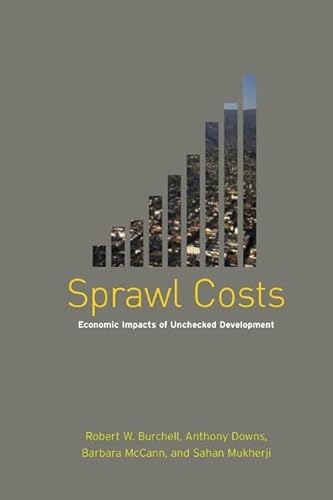Synopsis:
The environmental impacts of sprawling development have been well documented, but few comprehensive studies have examined its economic costs. In 1996, a team of experts undertook a multi-year study designed to provide quantitative measures of the costs and benefits of different forms of growth. Sprawl Costs presents a concise and readable summary of the results of that study. The authors analyze the extent of sprawl, define an alternative, more compact form of growth, project the magnitude and location of future growth, and compare what the total costs of those two forms of growth would be if each was applied throughout the nation. They analyze the likely effects of continued sprawl, consider policy options, and discuss examples of how more compact growth would compare with sprawl in particular regions. Finally, they evaluate whether compact growth is likely to produce the benefits claimed by its advocates. The book represents a comprehensive and objective analysis of the costs and benefits of different approaches to growth, and gives decisionmakers and others concerned with planning and land use realistic and useful data on the implications of various options and policies.
Review:
"A mix of art and science, Sprawl Costs carefully spells out the implications of two futures--sprawl-as-usual vs. compact growth--and the results are sobering. The authors provide convincing evidence that governments, businesses and families can save money and avoid headaches if our leaders pursue smarter growth strategies."--Don Chen "Executive Director of Smart Growth America "
"In a dozen concise and readable chapters, they discuss sprawl's definition and measurement; its effects on natural resources, infrastructure, real estate, fiscal soundness, travel, quality of life, and urbanity; its benefits; and the appropriate policies to deal with it."
--Planning
"About this title" may belong to another edition of this title.
![]()
